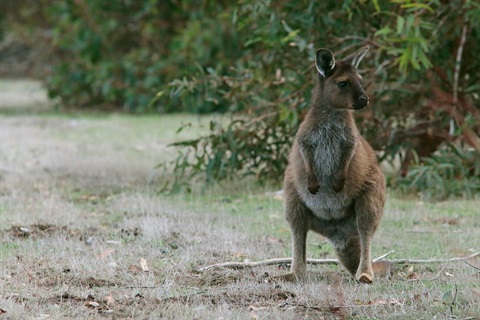Native Wildlife Rescue Information

When encountering sick, injured, or orphaned native animals, we would like to help but often aren't sure what to do or who to call.
If you find a sick or injured native animal or bird, call a wildlife rescue organisation straight away. Improper rescue can hurt or distress the animal and the rescuer. It is critical to get sick and injured wildlife vet treatment as quickly as possible.
Northern Tablelands Wildlife Carers: 1800 008 290
WIRES 24/7 Emergency Hotline: 13 000 WIRES (1300 094 737)
Northern Tablelands Wildlife Carers and the Wildlife Information, Rescue, and Education Service (WIRES) provide emergency advice, resources, skills training and various events. Please visit their websites for further information.
Emergency Advice
If you find a sick, injured, or orphaned native animal or bird, call a wildlife rescue organisation straight away. Improper rescue can hurt or distress the animal and the rescuer. It is critical to get sick and injured wildlife vet treatment as quickly as possible.
For more detailed information, please visit:
When Calling in a Rescue, Report the Exact Location
When reporting rescues, please try to confirm the exact location you found the animal. This is because many native animals are very territorial, so it's critical that when they are ready for release, we return them "home" to ensure their best chance of survival.
In addition, if we know the exact location the animal was found, many young animals have a better chance of possibly being reunited with their parents.
Certain Animals Should NOT Be Approached
If you encounter a sick, injured, or orphaned animal on the list below, call a wildlife rescue organisation straight away. These animals require specialist handling and MUST be rescued by trained wildlife rescuers.
- Snakes
- Bats
- Monitor lizards (goannas)
- Large macropods (kangaroos or wallabies)
- Raptors (eagles, falcons, or hawks)
What To Do While You Wait
After calling a wildlife rescue organisation you can:
1) Do remove any threats to the animal.
This includes keeping all people and pets away from the native animal, to minimise stress to the animal for vet transport or until a rescuer arrives.
2) If it is safe to do so, do contain the animal in a warm, dark, quiet place.
For example, gently wrap the animal in a towel and place it in a ventilated box with a lid, cover the box or container with a towel, and transport it carefully to the nearest vet or wait for the rescuer to arrive. Handle the animal as little as possible to minimise stress.
3) Do not give the animal any food or water, unless instructed to by a vet or the wildlife rescue organisation.
Further Information
For more information on specific species, please visit the WIRES Wildlife Information page.
WIRES has developed An Introduction to Australian Wildlife. This free online community course has been designed for people of all ages as an easy introduction to Australian wildlife for individuals and families who are unfamiliar with Australian native animals.